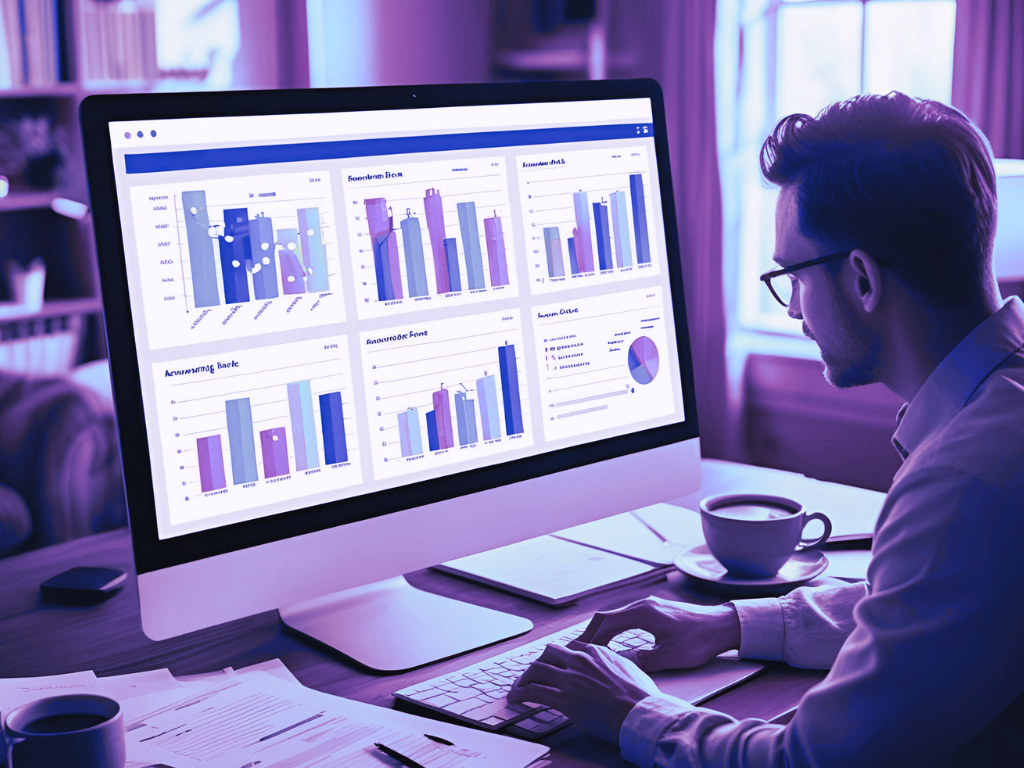Not all clients are created equal. Some are highly profitable, while others quietly drain resources. Yet many agencies lack the clear visibility needed to confidently answer a simple but essential question: Are we actually making money on this account? Knowing where your time, talent, and budget deliver the highest return empowers you to make smarter decisions about pricing, staffing, and long-term client relationships. At Accountability, we’ve designed our agency software to make client profitability analysis clear, accessible, and actionable. With our platform, teams can surface the financial truth behind every relationship—without waiting for month-end reports or struggling through spreadsheets.
How Accountability Streamlines Profitability Analysis
Seeing Profitability Clearly: Client-Level Reporting
Some relationships feel successful, but when the numbers finally come in, the margins say otherwise. That disconnect happens when financial data is scattered across tools, teams, or timeframes. The result? Leaders end up reacting instead of steering.
That’s why we built dedicated client-level reporting into our platform. Accountability aggregates all financial activity—fees, pass-through costs, time investments, and revenue—into a unified view per client. You can instantly assess profitability, compare clients side by side, and evaluate how your top-line growth aligns with bottom-line impact. It’s clarity that turns instinct into insight and empowers better planning across the board.
Breaking It Down: Job and Task Profitability Insights
Clients don’t just buy ideas—they buy deliverables. And within each job or campaign, there are often dozens of tasks, collaborators, and moving parts. Tracking profitability at only a high level misses the nuances that matter.
Our agency software allows you to dig deeper. Accountability tracks performance by individual job and even task-level activity, offering full visibility into where costs accumulate and value is created. If a certain kind of work consistently overdelivers, you’ll know. If others eat into your margins, you’ll see that too. These granular insights give you the power to fine-tune your offerings, adjust scopes, and better align pricing with effort.
Moving Beyond Month-End: Real-Time Data Access
Traditional reporting cycles force teams to wait until the end of the month to understand what already happened. But profitability challenges rarely appear overnight—they build slowly and invisibly over time.
That’s why Accountability provides real-time financial visibility. Our platform updates continuously, giving decision-makers up-to-the-minute access to the data that matters. Whether reviewing a campaign in progress or reassessing a long-term retainer, you can make informed adjustments in real time. No more guesswork. No more surprises. Just smart, data-driven decisions that keep your margins intact.
Reducing Manual Work: Automated Cost Allocation
Even the most powerful insights fall short if they’re built on flawed or incomplete data. That’s often the case when agencies rely on manual cost allocation processes. Hours are spent trying to attribute expenses, and accuracy is inconsistent at best.
Accountability automates cost allocation based on predefined rules, ensuring that every expense—from payroll to vendor invoices—is applied correctly and consistently. This dramatically reduces the burden on your finance team and increases confidence in your data. When you can trust the numbers, you can move faster and with greater certainty.
Evaluating Profit from Every Angle: Multi-Dimensional Analysis
Profitability isn’t a one-dimensional metric. A job might be profitable on paper but stressful to deliver. A client might bring in consistent revenue but tie up your best people. True strategic value comes from viewing profitability across multiple lenses.
With Accountability, you can evaluate performance not just by client or job, but by team, department, or service line. Want to know which services generate the strongest returns? Which teams operate most efficiently? Which types of work offer the best margin-to-effort ratio? Our agency software gives you the tools to ask—and answer—those questions.
This kind of multi-dimensional analysis equips you to spot trends, adjust resourcing, and refine your positioning in a way that fuels long-term growth.
Enabling Better Conversations with Clients
Transparency builds stronger relationships. When clients understand how scope, timelines, and revisions affect profitability, they’re more likely to collaborate rather than resist change. And when agencies have the data to back up pricing decisions or scope adjustments, those conversations become more strategic—and less stressful.
Accountability equips your teams with accurate, current data to support those discussions. Whether renegotiating a contract or setting expectations for the next campaign, you’re speaking from a position of insight, not instinct.
Empowering Profitability Through the Right Agency Software
Growth for the sake of growth can be a trap. More clients, more jobs, and more hours worked don’t automatically translate to more profit. Sustainable growth comes from understanding which relationships are truly adding value—and then scaling those strategically.
At Accountability, we believe your agency software should do more than track numbers. It should surface insights that drive smart decisions, support creative excellence, and align financial outcomes with business goals. That’s what we’ve built into every feature of our platform.
If you’re ready to elevate your approach to client profitability, we’d love to show you how.









